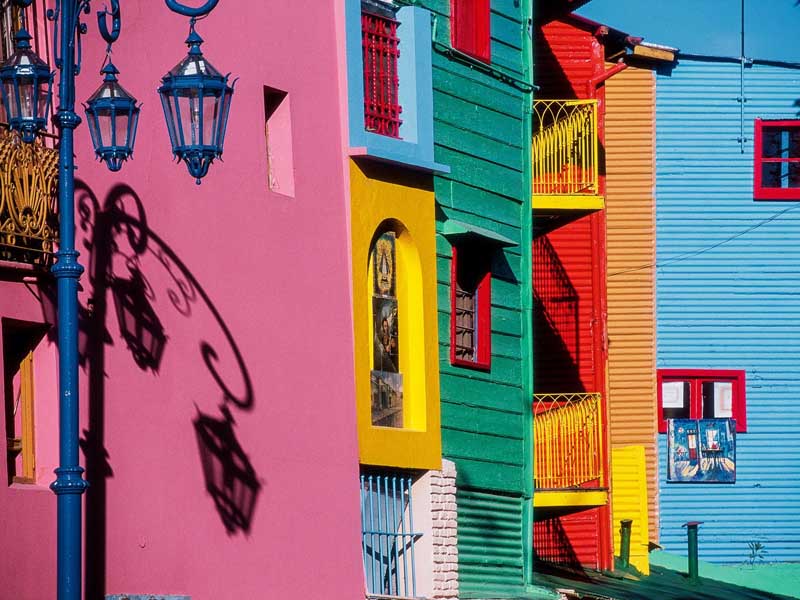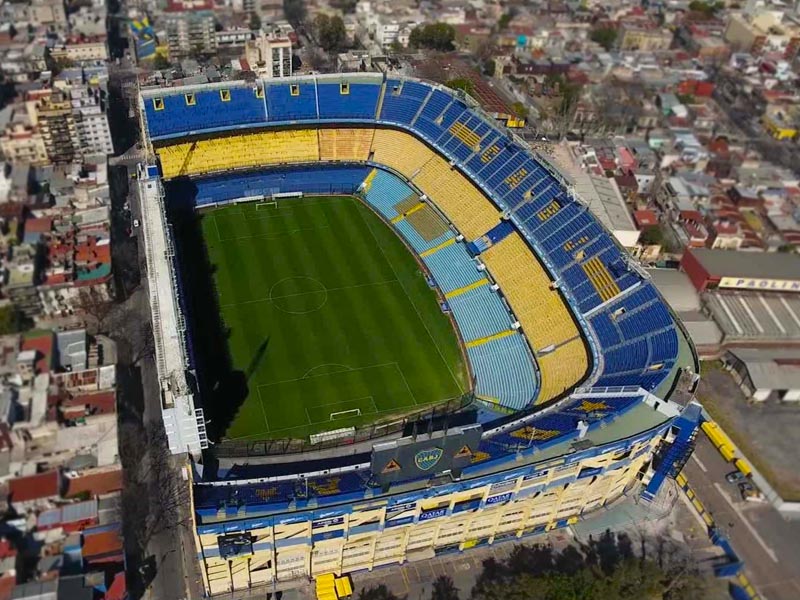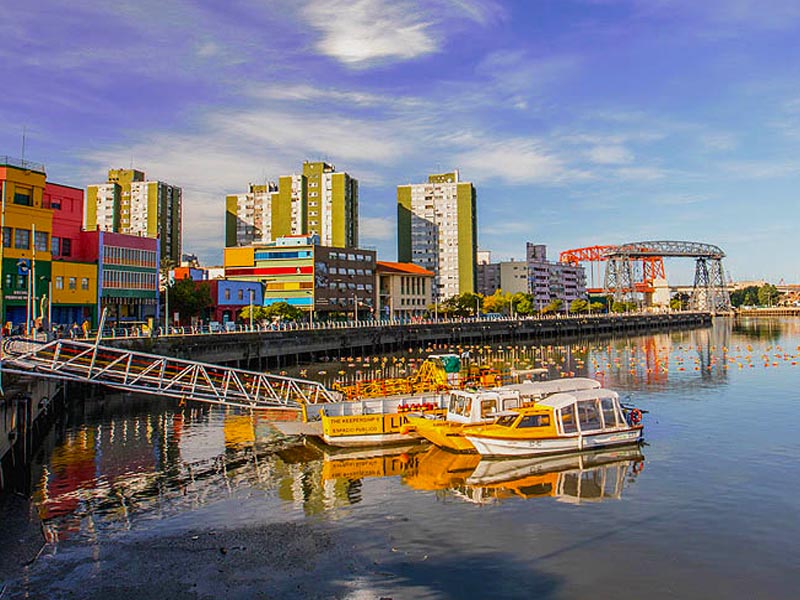1- The Heart of La Boca: Open Air Museum Caminito Street.
Many Italian immigrants came in mid-19th century to live in La Boca due to the work possibilities the nearby port offered them. They made their houses out of corrugated iron planks and wooden pillars, and used the discarded paint of the shipyard to protect their walls.
After decades the buildings were demolished and replaced by discolored houses. In 1950s painter Benito Quinquela Martin urged his neighbors to paint their homes in vivid colors to honor their Italian heritage. Caminito turned from a desolated street into a cheerful and dynamic place, and in 1959 it was declared “Street Museum” by the authorities.
Nowadays is the typical landscape, full of sculptures, mosaics and street art that tourists always want to visit. You can taste many typical dishes, look for a present in its souvenirs and handicraft market and even watch a tango dance. There’re many things to do and they’re all in only one place.
2- La Bombonera, Boca Juniors famous Football Stadium.
Italian immigrants also founded the club in 1905. At the beginning, they used a white t-shirt with a thin black line. But they shared the same colors with another club, so they decided who will keep it in a football match. And Boca lost. Juan Bricchetto, president of the club at the moment, should look for something new. As a former dock worker, he chose the colors of The Drottning Sophia, a Swedish vessel that was in the port at that moment. That’s how the blue and yellow from the Swedish Flag then became the club’s distinctive colors.
La Bombonera (the chocolate box)
The gigantic stadium with capacity for 59.000 spectators, was inaugurated in 1940. Its curious “D” shape is the reason for its incredible acoustic, and the sloping way in which they located the seats creates a feeling of closeness with people. But the most important thing is its public.
Boca Juniors fans create the mystique. Their songs and shouts during the matches make a vibrant atmosphere, like a heartbeat, one that can only be felt inside the stadium. Even the German magazine Kicker pointed out that La Bombonera “is not for the faint of heart” and chose it as the best stadium in the world.
Here’s a link to the club’s web site: https://www.bocajuniors.com.ar/el-club/la-bombonera
3- Vuelta de Rocha and Pedro Avellaneda ferry bridge.
Along with the colorful walls of the houses, these two places are also a distinctive landmark in La Boca. Vuelta de Rocha was originally an arm of the Riachuelo (creek), removed in the 1880s to make way for the current water mirror in front of the center of the neighborhood. It’s now a small square next to Caminito and some people says it was the spot where Pedro de Mendoza originally founded Buenos Aires.
From Vuelta de Rocha you can walk alongside the Riachuelo to the ferry bridge. It was built in 1914 in order to transport thousands of workers who needed to cross from Buenos Aires to Avellaneda, at a time when the latter was the main industrial and working-class city in the country. They abandoned the bridge in successive decades. Now restored and occasionally working, is one of the last 8 ferry bridges in the world.
When can you visit it?
The best moment to visit it is during daylight. And remember that during the weekends Caminito is usually too crowded. It is also not a good idea to stray too far from the most touristic streets.
And you, have already visited it? How was your experience? What was the best place you have been in? Hope you liked this article!
3 incredible places in La Boca you should know
La Boca is the most picturesque neighborhood in Buenos Aires. Its colorful buildings, streets art and the Boca Juniors Stadium makes it impossible to miss.


